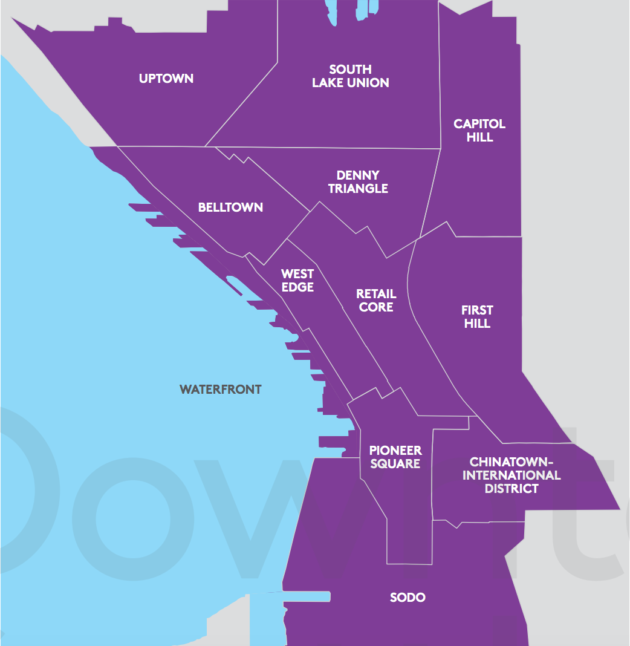
Seattle is speeding toward some of its density and transportation goals, according to a new study from an organization that works to improve the city’s downtown core.
The Downtown Seattle Association studied commuting habits, real estate development, and other metrics for its State of Downtown 2018 report. The group found that more than 70,000 people — or one in 10 Seattleites — live in the downtown area, which includes the downtown core, Capitol Hill, First Hill, the International District, SODO, and Uptown.

Downtown is also seeing record public transit ridership, according to a related report by Commute Seattle, a partner organization of DSA. The report indicates that just over 25 percent of commuters get downtown by single-occupancy vehicle, a 10-point drop since 2010. The number of single occupancy vehicles on the road is 6 percent less than the 71,000 car commuters in 2010. That decline happened as some 60,000 jobs were added downtown. Nearly 75 percent of commuters take public transit, walk, or use a new mobility service, like rideshare.
This post has been updated to clarify the change in single occupancy vehicles since 2010.

That massive job growth is driven by Amazon — which is headquartered in the downtown area, in South Lake Union and the Denny Triangle — as well as other tech and healthcare companies ranging from startup to titan.
To accommodate those workers, downtown Seattle added 3.6 million square feet of office space in 2017, amounting to a total of 11.2 million. There are currently just over 15,000 residential units downtown with an additional 26,000 scheduled for completion in the next three years.

That growth has been a challenge and point of contention in Seattle, as anyone who has tried to navigate Mercer St. at 5 p.m. could tell you. In addition to increased traffic, rising housing costs are displacing some longterm residents. The downtown-adjacent Central District’s African American population was 74 percent in 1970. In 2019, it is expected to be 14 percent.
Despite these challenges, DSA is optimistic about Seattle’s potential to navigate growth in its urban core.
“Since 2010, downtown has added more than 60,000 new jobs and we have one of the fastest growing residential populations of any downtown in the country,” said DSA CEO Jon Scholes in a statement. “Looking forward, we must expand housing options across our city and maximize our major investment in new light rail to sustain our vibrancy and economic progress. We have an incredible opportunity in Seattle to lead the way nationally by increasing prosperity and opportunity at the same time.”





